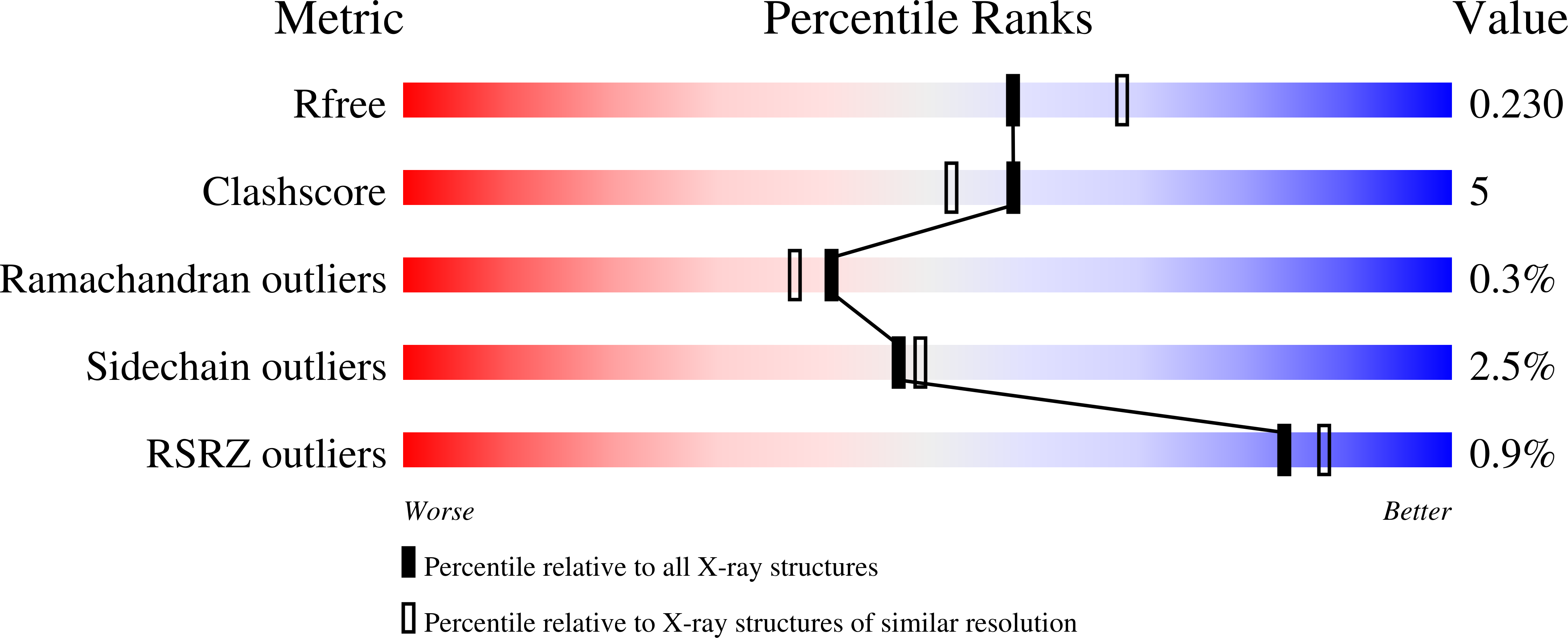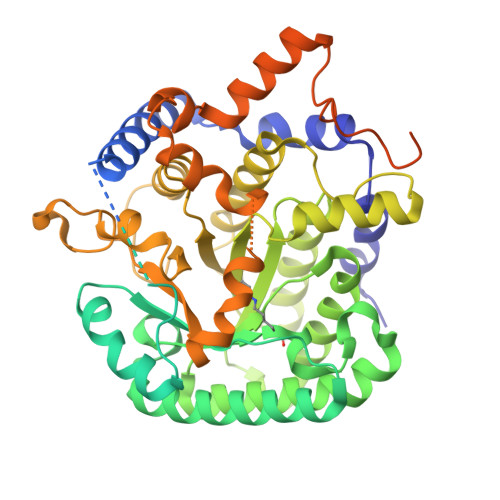The structure of the proline utilization a proline dehydrogenase domain inactivated by N-propargylglycine provides insight into conformational changes induced by substrate binding and flavin reduction.
Srivastava, D., Zhu, W., Johnson, W.H., Whitman, C.P., Becker, D.F., Tanner, J.J.(2010) Biochemistry 49: 560-569
- PubMed: 19994913
- DOI: https://doi.org/10.1021/bi901717s
- Primary Citation of Related Structures:
3ITG - PubMed Abstract:
Proline utilization A (PutA) from Escherichia coli is a flavoprotein that has mutually exclusive roles as a transcriptional repressor of the put regulon and a membrane-associated enzyme that catalyzes the oxidation of proline to glutamate. Previous studies have shown that the binding of proline in the proline dehydrogenase (PRODH) active site and subsequent reduction of the FAD trigger global conformational changes that enhance PutA-membrane affinity. These events cause PutA to switch from its repressor to its enzymatic role, but the mechanism by which this signal is propagated from the active site to the distal membrane-binding domain is largely unknown. Here, it is shown that N-propargylglycine irreversibly inactivates PutA by covalently linking the flavin N(5) atom to the epsilon-amino of Lys329. Furthermore, inactivation locks PutA into a conformation that may mimic the proline-reduced, membrane-associated form. The 2.15 A resolution structure of the inactivated PRODH domain suggests that the initial events involved in broadcasting the reduced flavin state to the distal membrane-binding domain include major reorganization of the flavin ribityl chain, severe (35 degrees ) butterfly bending of the isoalloxazine ring, and disruption of an electrostatic network involving the flavin N(5) atom, Arg431, and Asp370. The structure also provides information about conformational changes associated with substrate binding. This analysis suggests that the active site is incompletely assembled in the absence of the substrate, and the binding of proline draws together conserved residues in helix 8 and the beta1-alphal loop to complete the active site.
Organizational Affiliation:
Department of Chemistry, University of Missouri, Columbia, Missouri 65211, USA.
















